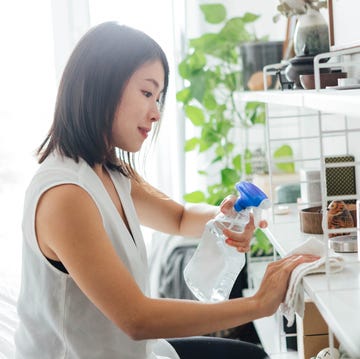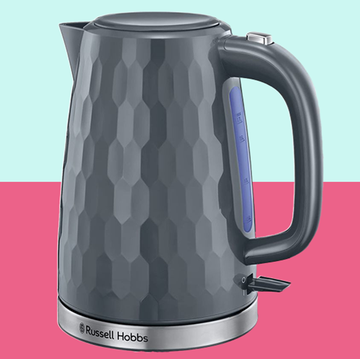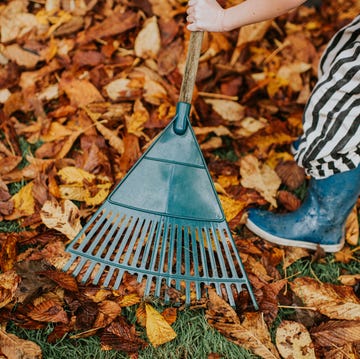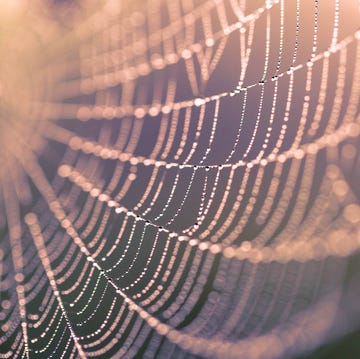When we’re doing our washing, I doubt many of us think twice about the detergent. We either eyeball the level as it glugs into the detergent drawer or bung a capsule straight into the drum – what could go wrong? Turns out, plenty.
I’ve been testing detergents for several years now, and things do go wrong from time to time (even when you follow the instructions). Everything from an overly foamy washing machine to ‘crusty’ laundry is the result. You might not even realise you’re making a mistake, but it can still take its toll on your laundry, and even the machine.
So here are the six major mistakes people make with their laundry detergent, including the warning signs to look out for, and what to do instead.
What to read next
1. Overdosing
The biggest and likely most common mistake is using too much detergent. We assume the more we use, the cleaner the result. But that simply isn’t true. The reality is the more detergent you add, the harder your washing machine has to work to rinse it away.
More modern machines will be able to sense the excess soap and run additional rinse cycles (a waste of energy, water and detergent), but a basic washing machine will just start spinning with the excess suds still in place. In that case, your laundry will emerge stiff and ‘crusty’ and more likely to irritate your skin, while your machine will be more susceptible to mould growth where the soap suds are left internally.
The telltale sign of using too much detergent tends to be residual foam at the end of the cycle (usually a little pile of foam on the rubber seal). If you spot this, double-check the dosage instructions and reduce what you’re using accordingly. Keep in mind that everyday dirt and soft water requires less detergent compared with heavy stains and hard water.
2. Using detergent for your whites on your colours and vice versa
There are all kinds of formulations of detergent to consider. Bio detergent contains enzymes to help break down protein-based stains, while non-bio doesn’t contain enzymes and is thought to be gentler on sensitive skin. There’s also detergent designed explicitly for your whites; these generally contain optical brighteners that reflect the light to make whites appear brighter. Then there’s detergent designed for your colours, which brightens the colours and prevents fading.
You need to use the most appropriate detergent for the load; otherwise it can do more harm than good. A detergent designed for whites can dull your colours, while a detergent for colours will ultimately give your whites a lacklustre appearance because it lacks the optical brighteners.
You should keep and use both white and colour detergents, unless you prefer to use a universal formulation. It’s also handy to have both bio and non-bio detergents, depending on the level of stains you’re washing and the delicacy of the item. Non-bio is milder and less abrasive on your clothes.
3. Ignoring hard water
The harder your water, the more detergent is needed. That’s because hard water contains additional minerals, including calcium and magnesium. These minerals impair the detergent’s performance, so it needs to work harder. If you’re unsure of your water’s hardness level, you can find out online through your local water company’s website.
Keep in mind that liquid and powder detergents are generally better for hard water cycles; the reason being you have more control over the dosage. The dosage chart shows the necessary increase for liquid detergents in millilitres (or grams for powder), but for pods and detergent sheets, sometimes twice as much is recommended (as there’s no other option). I’ve often found this is too much, unless you’re washing a large, heavily stained load of laundry in a hard water area.
Ultimately, you need to pay attention to both the water hardness and how soiled your items are, along with the weight of the laundry (and size of the machine). These will all impact how much detergent is required.
4. Not cleaning the detergent drawer
There’s never a good time to clean the detergent drawer. But, with residual suds left behind after every wash, mould soon takes over. Before you know it, your fabric conditioner drawer is blocked and backing up with water, and your clothes are coming out smellier than usual.
Mould in the detergent drawer can indicate further mould growth within the appliance. And unless dealt with, this can result in a smelly drum, which can end up transferring over to your clothes. Blockages will also take a toll on the efficiency of the machine.
The solution is simple. You need to run a proprietary washing machine cleaner through the machine every three to six months to clear the bacteria away. You also need to remove and scrub the detergent drawer clean in soapy water; an electric cleaning brush can help with this, as can cotton buds for reaching into the awkward crevices. Rinse and then leave to dry before replacing.
5. Using bio detergent on your delicates
Has a mystery stain popped up on your favourite silk dress? While bio detergent, with its enzyme-based cleaning power, may seem like the obvious answer, don’t do it! The enzymes will break down protein-based stains, but they will also damage the natural fibres found in silk and wool. So over time, it will damage your delicates.
Stick to a mild detergent designed especially for delicates, such as Ecover Delicate Laundry Liquid. Opt for liquid over powder to give it the best chance to dissolve at lower temperatures (otherwise your laundry can end up peppered in detergent). Follow the dosage instructions and mix in well before you wash your delicates.
6. Buying whatever’s on offer
Bagging a bargain is a great feeling, but with detergent, you need to make sure you’re buying the right format and type for your needs. For stain removal, a bio powder detergent is your best bet; on test at the GHI, these consistently showed the best stain removal. However, powder won’t dissolve so well at lower temperatures, so if you run a lot of low temperature or even quick wash cycles, a liquid or gel might be better. If you’re in a hurry, capsules are much quicker and easier to dose, but are generally the most expensive. You need to weigh up the pros and cons for each type to decide which format suits you best, taking the bio/non-bio and whites/colour formulations into account. Our detergent guide can help you do this.
There are certain ingredients to look out for, depending on your laundry and location, too. For hard water areas, opt for detergents containing ‘builders’, which deactivate the minerals in the water. For whites, make sure the detergent contains optical brighteners to make them appear brighter. And for the best shelf-life, look out for preservatives, solvents and stabilisers. Once you know what you need from your detergent, then you can consider the best value.

























